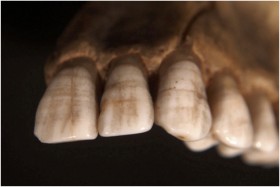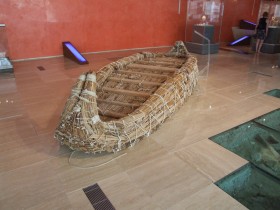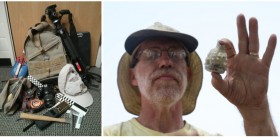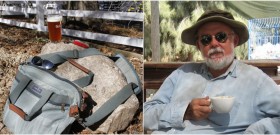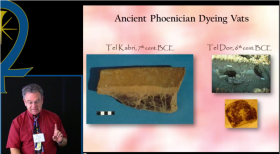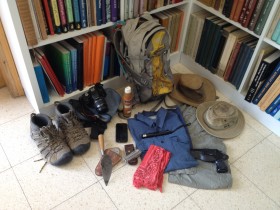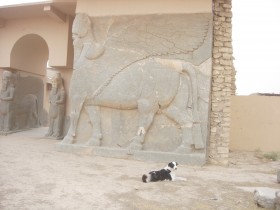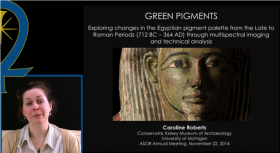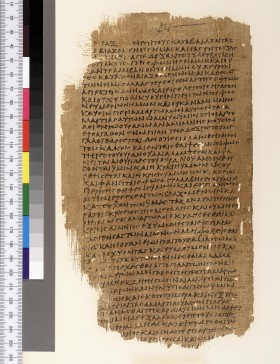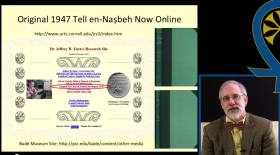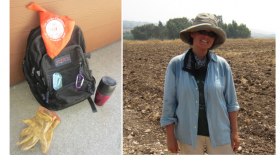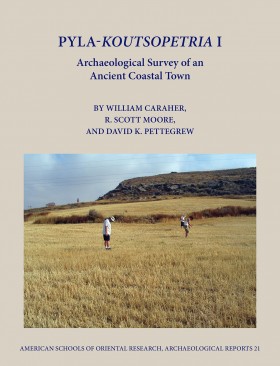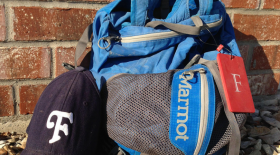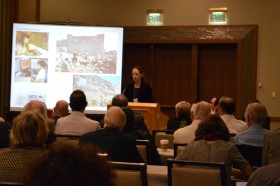What’s in your dig bag, Morag Kersel?
Even though I’ve been vigilant about sunscreen, water, and hats for decades this winter I had a tumor removed from my nose – the result of 20+ years of sun exposure. I never want another needle in my nose and I now have a Beko gear nose guard […]
The Life and Health of Assyrian Queens
When great Queen Yaba’ of Nimrud passed away, she left a curse to those who would dare disturb her final resting place. Despite her warning, excavations from 1988 to 1990 in the northwest palace of King Assurnasirpal II in the […]
Rediscovery with Reflectance Transformation Imaging - Annual Meeting Poster [VIDEO]
This paper presents the contents of the block as revealed through Reflectance Transformation Imaging (RTI) and digital epigraphy. The author applied these technologies as part of […]
What’s in your dig bag, Samantha Lindgren?
In our “What’s in your dig bag?” series, we asked working field archaeologists what they carry with them out in the field. We wanted to know what gear they love and what items might be unique to them. I wear a loose cloth hat with a brim[…]
Living and Working in the Shadow of the Seven Churches
I first came to Turkey in 1992 during my doctoral research on the Book of Revelations. My visit to the Seven Churches – the seven early churches or congregations mention in the Book of Revelations - was life-changing. The […]
Working in Sumer: the New Italian Archaeological Expedition at Nigin, Southern Iraq
Despite Iraq’s troubles, archaeological research continues to expand. The Italian Archeological Expedition to Tell Surghul, ancient Nigin, started in February. The project […]
What’s in your dig bag, Mark Schuler?
A typical day pack won’t work at our site. We have a bit of a daily hike up the mountain and must carry everything except large tools. Since basalt tends to be rough on nylon, I use a Maxpedition - Vulture-II™ backpack. It holds 34 liters of […]
What’s in your dig bag, Jeff Blakely?
In our “What’s in your dig bag?” series, we asked working field archaeologists what they carry with them out in the field. We wanted to know what gear they love and what items might be unique to them. I use a 5″ on a mud-brick site […]
Setting the Archaeo-Chemical Record Straight Regarding Tyrian Purple Pigments and Dyes
His paper, “Setting the Archaeo-Chemical Record Straight Regarding Tyrian Purple Pigments and Dyes,” was engaging, entertaining, informative, and full of […]
11 Photos from Nimrud
Reports indicate that ISIS has destroyed portions of the Assyrian city of Nimrud. Check out these 11 photos.that document some of what may have been lost. 1. Aerial view of Nimrud during the 1950s. 2. Aerial photograph of Nimrud showing topography and principal […]
Green Pigments: Exploring Changes in the Egyptian Pigment Palette [VIDEO]
From the Late to Roman Periods (712 BCE–364 CE) through Multispectral Imaging and Technical Analysis. Caroline Roberts was nice enough to volunteer to present her paper for ASORtv. This paper looks at […]
Zodiac Calendars and Angelic Teaching in the Dead Sea Scrolls
Angels are often associated with secret knowledge but not usually with authentic mathematics. In several of the Dead Sea Scrolls there is a complicated network of parallel stories in which angels impart secret knowledge of […]
Bin There, Done That: Storage Bins at Tell en-Nasbeh and the Role of the State
At theASOR Annual Meeting, Jeffrey Zorn of Cornell University presented his paper, “Bin There, Done That: Storage Bins at Tell en-Nasbeh and the Role of the State,” during the Archaeology of […]
What’s in your dig bag, Jennie Ebeling?
My dig bag may look ratty, but it’s special to me. I bought it 20 years ago in Tucson and it has all kinds of hidden pockets that occasionally yield surprises, like long-lost flash drives, old Burts Bees lip balms, and the key to the ground stone artifact […]
“Interview with the Author: Pyla-Koutsopetria I,” Featuring William Caraher
In this episode of the Friends of ASOR Podcast, we’re excited to bring you an interview with William Caraher, one of the authors of Pyla-Koutsopetri I: Archaeological Survey of a Ancient Coastal Town. The book […]
What’s in your dig bag, Eric Welch?
In our “What’s in your dig bag?” series, we asked working field archaeologists what they carry with them out in the field. We wanted to know what gear they love and what items might be unique to them. I’m a baseball hat guy. In my mind, the Indiana […]
Keeping Fieldwork Safe from Sexual Harassment and Physical Violence
At theASOR Annual Meeting, Beth Alpert Nakhai not only chaired the Women at Work: Making One’s Way in the Field of Near Eastern Studies session, but also presented a paper and was a discussant for another […]
From Banning to Changchun: Cuneiform Studies Online, Today and Tomorrow
Paper publication of cuneiform artifact photographs has not progressed much since I was a graduate student in Germany in the 1980s. Instead, the advent of web-based […]

